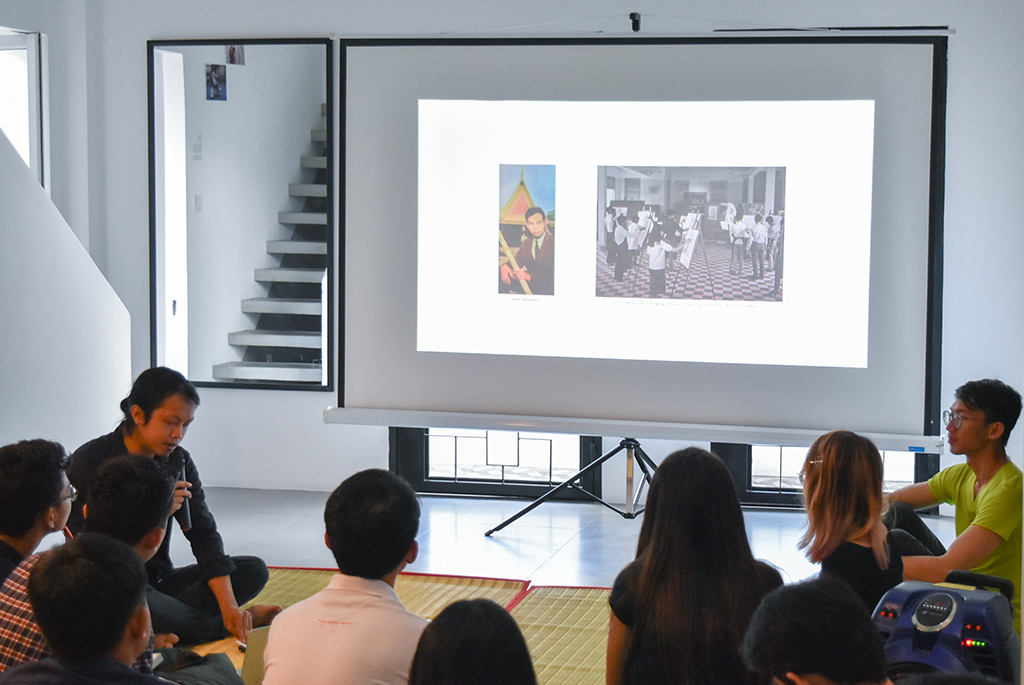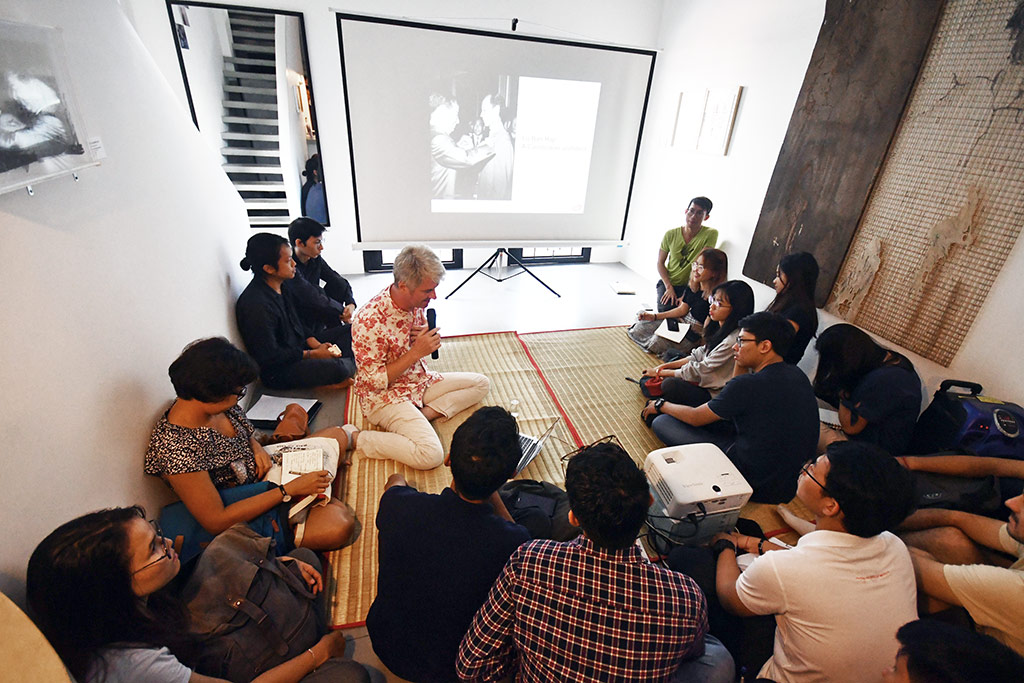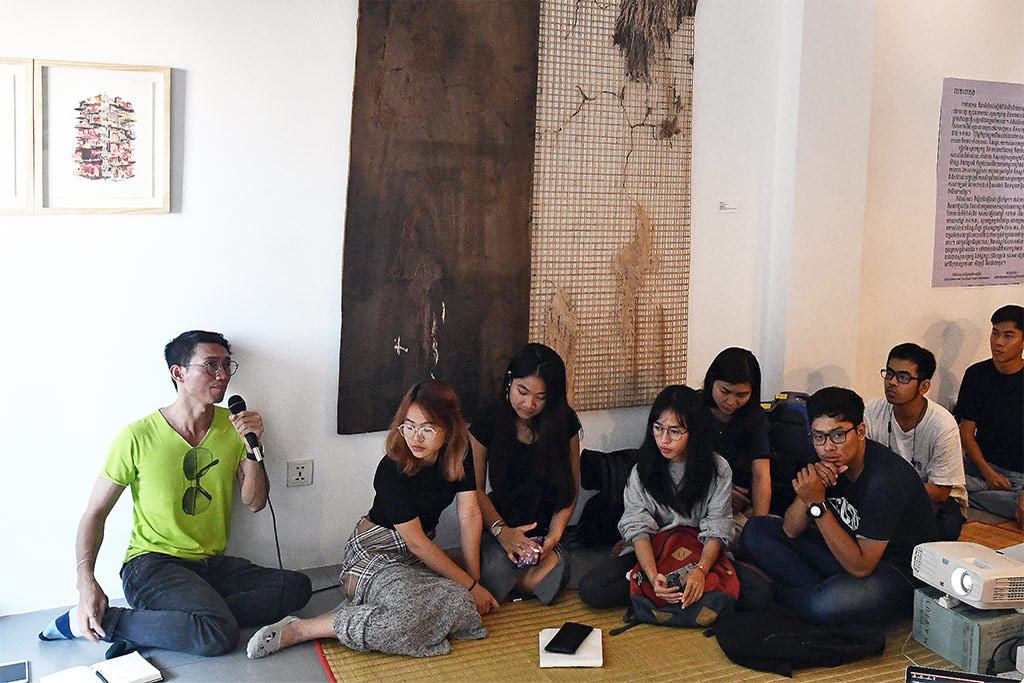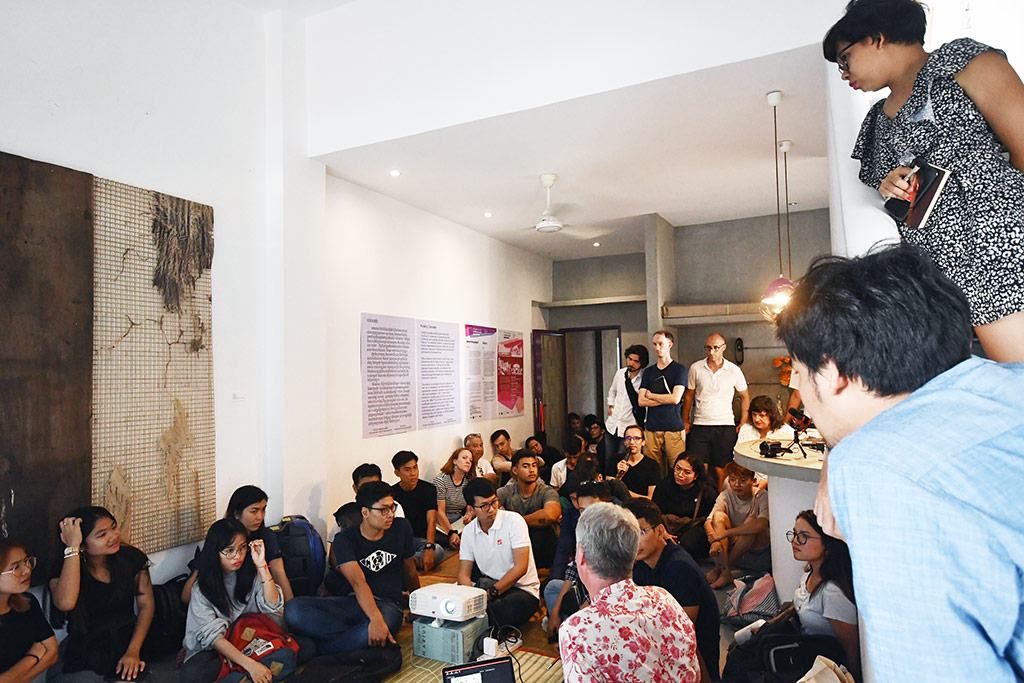
Besides film screenings and city tours, a public lecture on 12 October invited the public to delve deeper into the modern history of Phnom Penh and Cambodia. The talks on Phnom Penh’s urban changes since postcolonial independence and the story of Cambodian architect Lu Ban Hap drew an engaged audience.
The local curator, architect and urbanist Sereypagna Pen began by reflecting on Phnom Penh’s development and the city’s changes through colonial and postcolonial city planning and architecture. In his talk, he examined amongst others two distinguished projects – the Olympic National Sports Complex and the Bassac Riverfront Project from the Sangkum Reastr Niyum era – which reflect both the ideas of the Cambodian modernism movement and urban changes in Phnom Penh from early French town planning to the post-independence period up until today. In particular, the comparison of historical maps from the 19th century with urban development plans drawn by the French colonial government showed significant change in urban planning parameters. Looking at today’s urban development, only the complete lack of qualified urban planning processes can be diagnosed.

Moritz Henning from the Berlin team, an architect and independent researcher, gave a talk on the life and work of Cambodian architect Lu Ban Hap who, as head of the new Service Municipal de l’Urbanisme et d’Habitat (city authority for urbanism and housing), was responsible for planning and construction of the city after independence. Moritz Henning met the mostly overlooked, but eminently important architect several times at his home near Paris, France, where he found a new home after fleeing the Khmer Rouge regime in 1975. Using personal materials from Lu Ban Hap and historic postcards and photos, as well as construction and development plans, Henning highlighted the close connection between Lu Ban Hap’s biography with the political circumstances as well as the interplay of European modernism and Cambodian motifs in his buildings. He also drew attention to the fact that although Lu Ban Hap was hugely influential for the New Khmer Architecture movement, today little is known about his work, which is in danger of being forgotten.
A short overview on Lu Ban Hap’s life and work, written by Moritz Henning, can be found on the website of the Phnom Penh Post.
The talks were followed by a lively and fruitful Q&A in English and Khmer.


